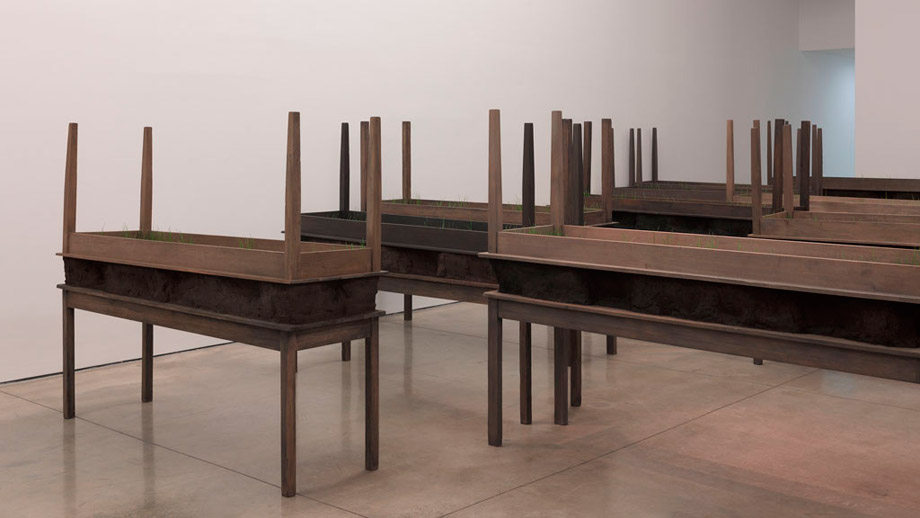William Kherbek reviews Colombian artist Doris Salcedo’s latest works of installation and sculpture at White Cube Mason’s Yard

Doris Salcedo’s unique facility for humanising space through her installations is on impressive display in her new show at the Mason’s Yard White Cube. Salcedo’s will be a familiar name to even casual followers of art. In 2007 the Colombian artist’s work, Shibboleth, occupied the Turbine Hall at the Tate Modern. In Shibboleth, a 548 foot long fissure was opened in the floor of the gallery and allowed to spread and widen throughout the cavernous hall.
The work made headlines as much for the physical as well as the artistic risks it posed; more than ten people were injured viewing the work.As the piece concerned itself with the “negative space” of borders, the dangers it presented seemed almost to reify the conceptual territory Salcedo wanted to explore; a neat trick for a conceptual artist, even if the accidents weren’t intentional. Her new show at the White Cube is unlikely to leave any permanent physical scars on its viewers,
but its subject matter is equally powerful and it is rooted in similarly bleak psychic dynamics.A genuinely remarkable aspect of Salcedo’s new works is their ability to highlight the tension between sculpture and installation and manage the interstices between them in a masterly fashion. In the upstairs gallery,a new sculpture titled “A Flor de Piel” spreads out from the east wall of the space.
“A genuinely remarkable aspect of Salcedo’s new works is their ability to highlight the tension between
sculpture and installation”
The sculpture is made entirely of rose petals which have been carefully stitched together. The attendants don’t allow much up-close inspection, but that’s not necessarily a problem. The use of flower petals, especially roses, as material ran a serious risk of overweening sentimentality coming to define the work,but the lighting and the distance keeps the materials from becoming overly oppressive.The sculpture seems to aspire toward the state of an installation with its roiling,almost viscous topographies.
Downstairs Salcedo has created an installation called “Plegaria Muda” which seems to have the material awareness of sculpture. The piece is composed of a number of table-like structures described as being, “approximately the length and width of a standard coffin”.The tables are stacked on top of each other and with a generous wedge of sod between them.In the fissures of the wood, it is possible to see spare filaments of grass poking through. There’s certainly a celebratory quality to the piece, despite its formidable, labyrinthine construction.“Plegaria Muda” absolutely owns the space, making getting from
one end of the gallery to the other a genuine mission, but it’s an impressive visual adventure, and it becomes almost meditative after a while. Learning that the work grew out of research Salcedo made into life in the ghettos of Los Angeles and into a government-approved mass grave of more than 1500 young men unearthed in her native country, some of the easy redemptive readings of the work drains away, but, even pondering the bleakness on the way up the stairs to the ground floor, it is the little streaks of green that keep resurfacing in the mind.
Doris Salcedo is at White Cube Mason’s Yard, from 25 May – 30 June




